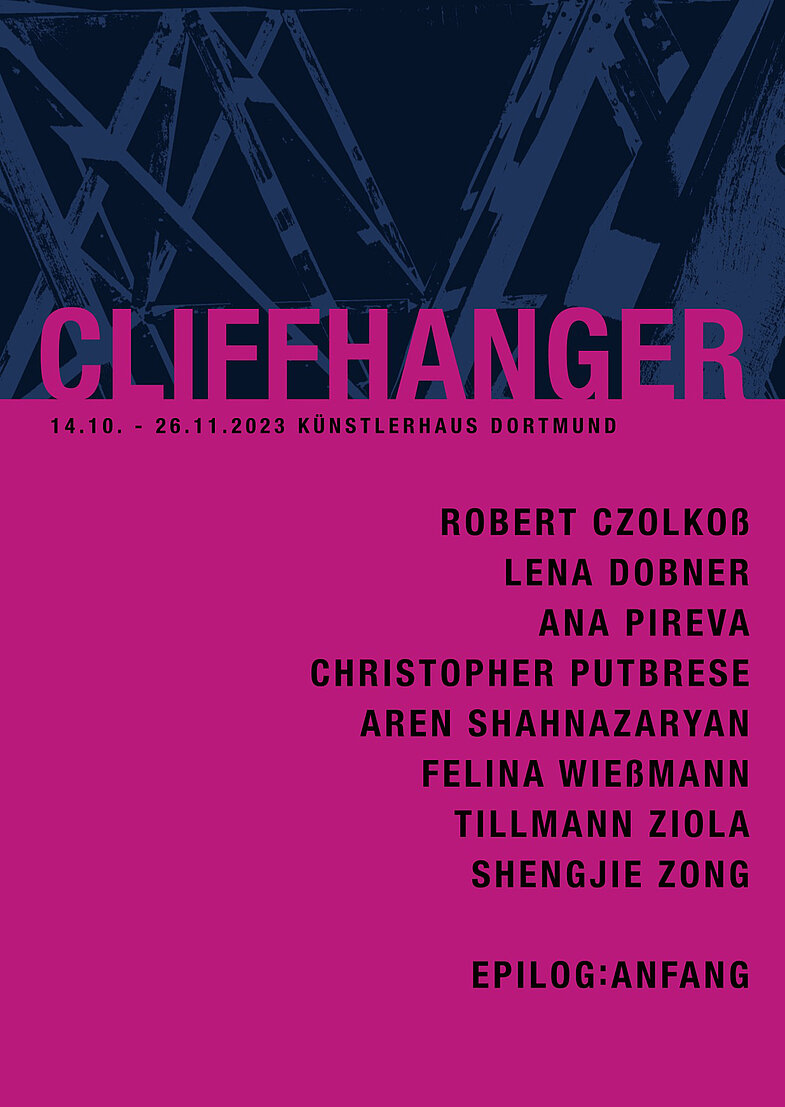
The tension mounts: a leap into the unknown and an open ending. In film and television, the term "cliffhanger" refers to the exciting moment at the end of an episode that leaves the further course open. The viewer is tied to the screen full of expectation and curiosity.
Linked by their joint studies at the HfBK Dresden with Prof. Ralf Kerbach (class for painting and visual design / image research) and their close exchange with each other, eight master students have independently initiated the exhibition CLIFFHANGER.
Painting, sculpture, objects and installations of the artists are shown shortly before their step into artistic freelancing - into uncertainty.


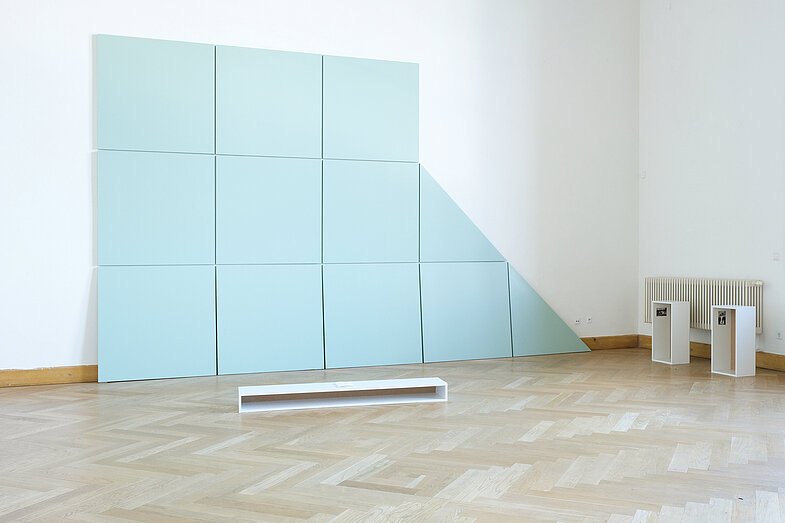
The meaning of art manifests itself in constant questioning and does not usually formulate universally valid answers. Art can, in addition to the aesthetic experience, for example, show something, convey something or expand consciousness . The nominal definition of art is in a constant development and in this development I would like to participate. I try to avoid the permanent reproduction of my working method formally and also in terms of content, because for me is not only the result of a work decisive, but also the process that leads to the final work. The confrontation with the unknown, for example in the form of new content or new materials and the confrontation between me, my work and the viewer is essential for me. I do not want to put finished products into the world, but ideas (prototypes) for me and the viewer. I would like to open discourses by means of my artistic work.
"A constant questioning and formulating is at the center of Robert Czolkoß' artistic work. His works are not about generally valid answers, concrete results or finished products, but about the representation of processes. The viewer's engagement with the work plays an essential role. Architecture, building materials and the formal language of the man-made environment are reflected in a unique combination of sobriety and poetry." (Liam Floyd)
Driven by my inner tachism I translate occurrences, which are the most important in my life, on the canvas. In the well oldest imagery, which does in our humanity exist, painting, I try to develop expressions with traditional genres in my own language. I want to quote therefore a few words of Rainer Maria Rilke (from his dairy in Firenze). These sentences have accompanied myself since I’m making art. "That art in its height can’t be national, it makes: all artist actually are born in distant parts, the artist has nowhere a home but by his/her own. And his/her oeuvres, which announce the language of this country, are his/her realest."
"Experiences and stories, acquaintances and relationships are reflected in explosive scenes in her paintings. Lena Dobner's works are characterized by an unmistakable own handwriting. Her visual language manifests itself through the most important incidents of life on the canvas. If one understands life as a constant journey, Lena Dobner has her inner home in painting." (Liam Floyd)
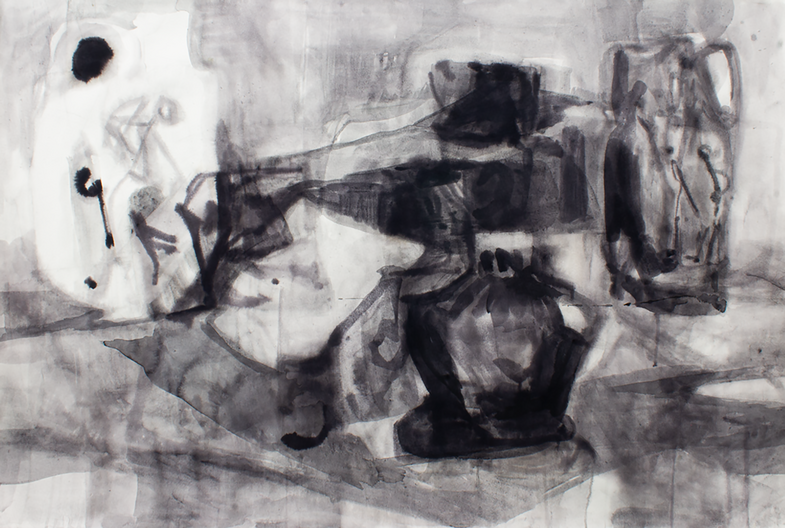
A central aspect of Pireva’s artistic expression is her focus on painting on paper. She explores introspective themes through the use of archaic images, objects, and motifs, creating a visual landscape within which she can reflect on herself and her experiences. Abstract folkloreinspired compositions, materiality and fluid calligraphic brushwork are key elements in Pireva’s works. In addition, she continues to explore her visual language in the media of lithography and papermaking, and is deeply invested in the creation of her own materials, including ink, watercolor, and paper.
"Misty surfaces run into each other. Color contrasts and brushstrokes reveal shapes that often become recognizable as objects and bodies only at second glance. Ana Pireva uses calligraphy, lithography, ink painting and papermaking to explore forms and explore themes of folklore, self-reflection and acceptance. Her works exude a calmness and depth that are expressions of the meditative sensibility of her working method." (Liam Floyd)
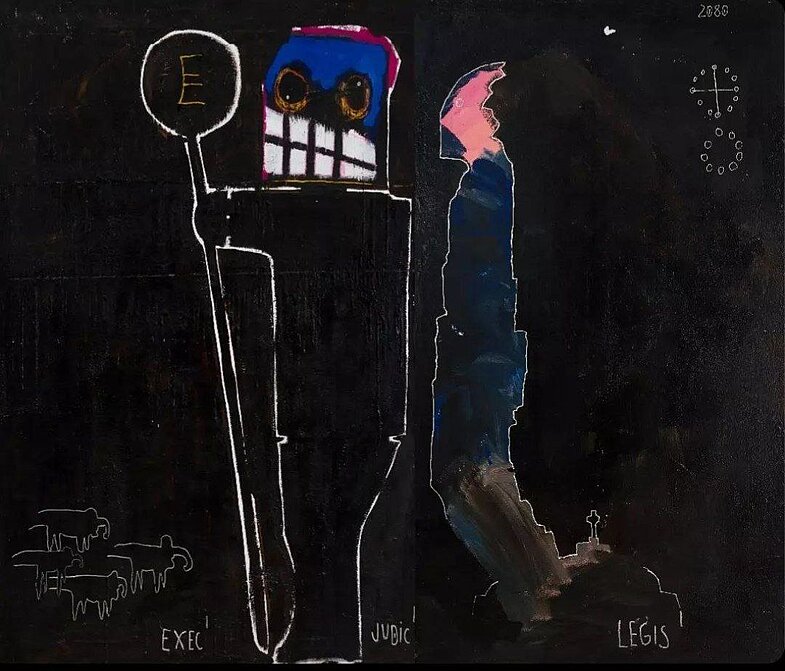
My art is like fire, it eats wood, it is water, gives fish a habitat. Earthy in taste and without air, it does not make you full.
"Joy, surprise, fear, anger, disgust, sadness, contempt. Christopher Putbrese is dedicated to the moments and feelings of everyday life. His work usually begins where others bashfully look aside. With humorous provocation and the use of familiar symbols, he creates images that deliberately renounce concrete and accurate representation and illustration. The story to it and the criticism arise only in the head of the viewing person." (Liam Floyd)
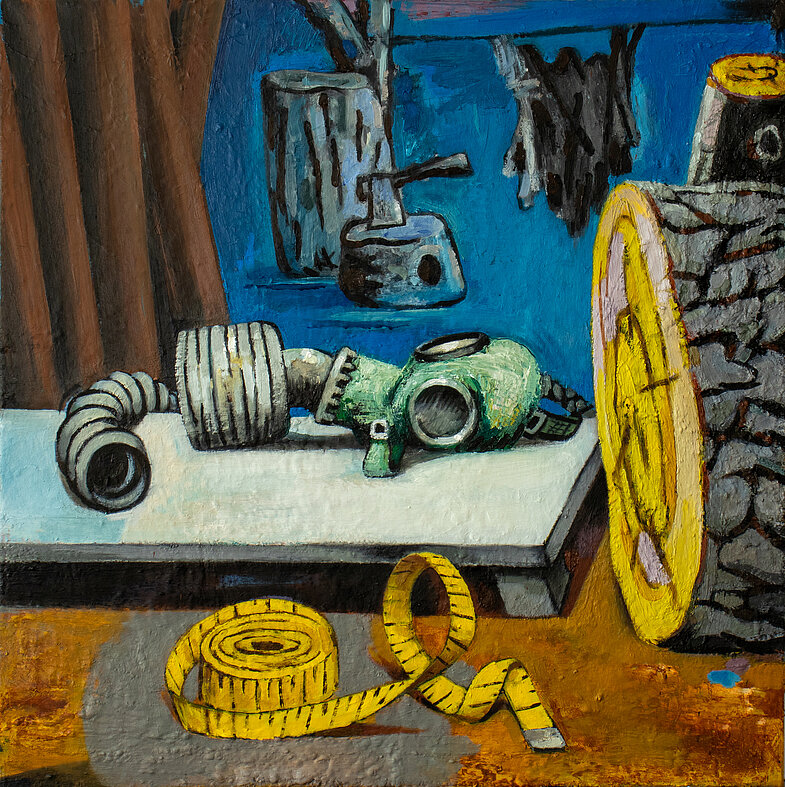
Aren Shahnazaryan's paintings are marked by energetic brushwork and a bold approach to image-making, as well as an intense visual language expressed through form and color. He does not ascribe fixed meaning to the visual elements in his work, instead seeking to create an atmosphere within each piece that reflects his personal experiences and sensations. He is deeply committed to the creative process, working intensively on each painting until it reaches a unique and distinct state.
"In poignant scenes, iconographic symbols and figures meet and tell mysterious stories. For Aren Shahnazaryan, the medium of painting and the process of creating art play an equal role alongside the content level of his works. Guided by his intuition, his paintings are painted over so many times until the thick layers of paint form a structure and the canvas becomes visibly heavy." (Liam Floyd)
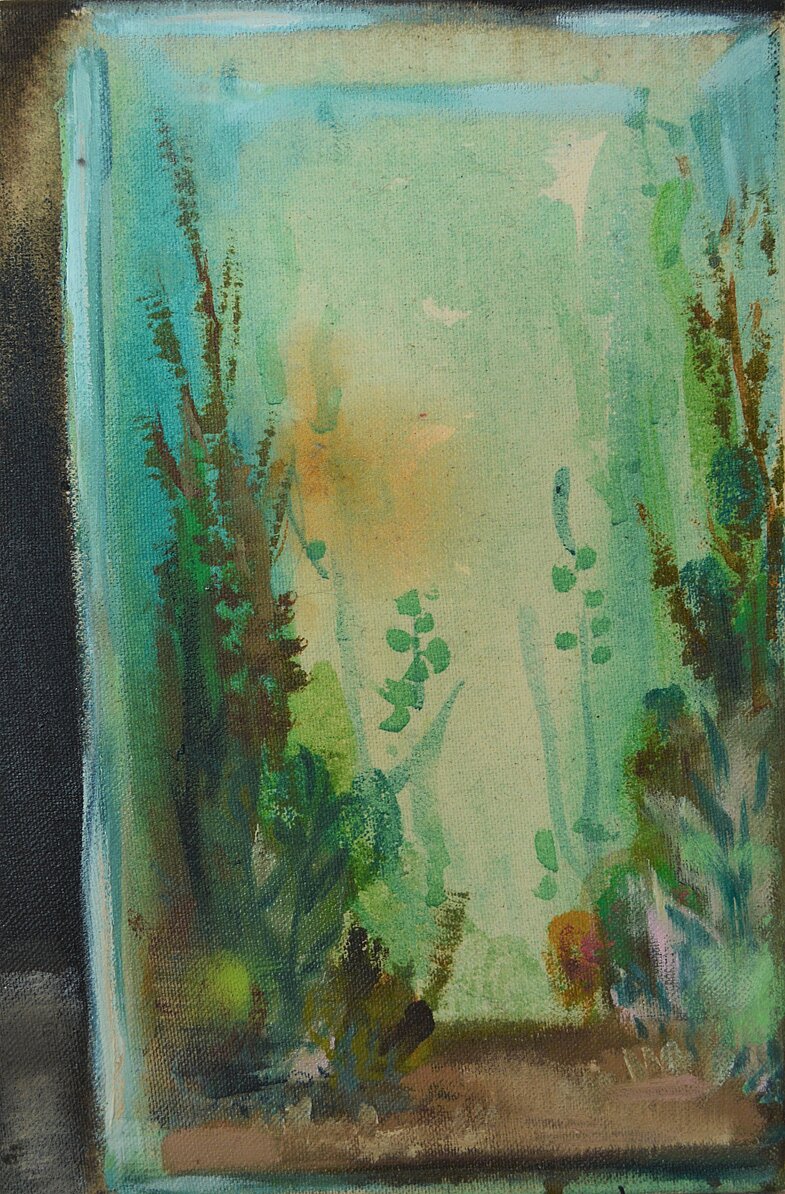
In my work I put painting to the test. Through its own sensitivity and pictorial power, I explore the intermediate step to medialization, new readings and rapid transformability in art. The focus here is on the repetition and dissolution of the figure in space. Abstract emotional worlds and thoughts are condensed. The solitary and silent process of painting is in many ways supportive: analytical, selfforgetful and at the same time self-questioning. There I want to put the durability and permanence of painting and its timeless meaningfulness in current context. Meanwhile, I am always in search of an abstract truthfulness, which moves me in the innermost.
"The colors run on the canvas and give the images the impression of a snapshot. As in a photograph, brief glimpses of situations are granted. The smooth brushstrokes and dripping paint create a dynamic and movement in the image, which makes it believable that what is seen could change at any moment. Felina Wießmann is on a constant search for an abstract truth. The solitary and silent process of painting is supportive in many ways: analytical, self-forgetting and self-questioning. The figures and scenes repeat themselves in the painterly space and dissolve - a reconstruction and deconstruction of abstract emotional worlds." (Liam Floyd)
www.instagram.com/felinawiessmann
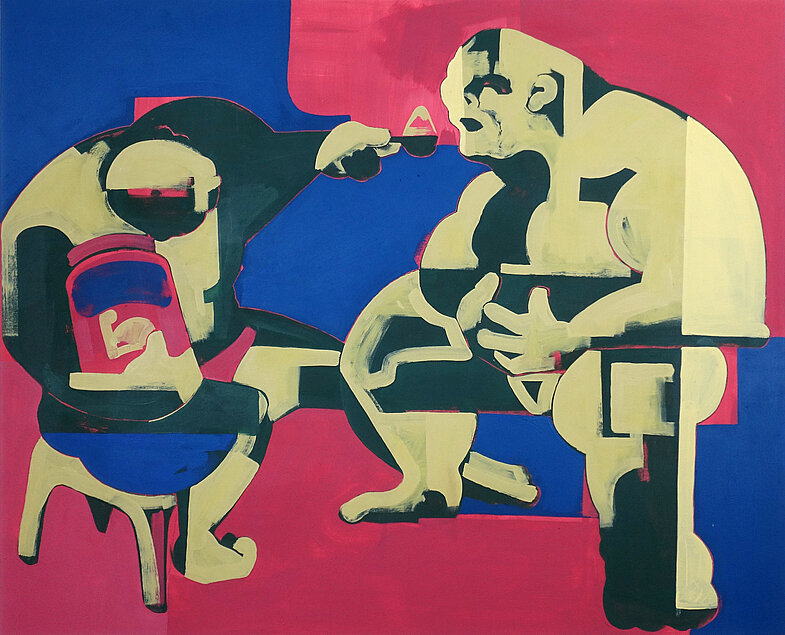
Growing just to grow. To consume to become more. To consume passively. The Human only has to open his mouth, the environment is filled with consumption. As soon as the human does open himself to consumption, a hardly stoppable suction develops into him. The offer of consumption which flows into him is food which never makes full. And man fills and fills himself, until he will not want to close his mouth any more to satisfy his demand. Is it a maternal gesture, traditionally seen, or rather an imposition. Consuming for the sake of consuming, distancing itself from the purpose. The two figures in „Fütterungszeit" look strong, but can actually only sit. They slowly become two piles. Two piles that are getting bigger and bigger and thus more and more immobile. The passive figure silently accepts it, has regressed and is fed, as if in immature age. The mouth that once served her for speaking out has now only one purpose in consumption left.
"Out of living, breathing color surfaces, larger-than-life figures emerge that form the protagonists in Tillmann Ziola's works. The title often offers a humorous reference to the plot. The strong language of form and intense color contrasts virtually vibrate in their interplay. The confidently placed brushwork and the courage to use surface and color give Tillmann Ziola's works their characteristic expressiveness and unmistakable style." (Liam Floyd)
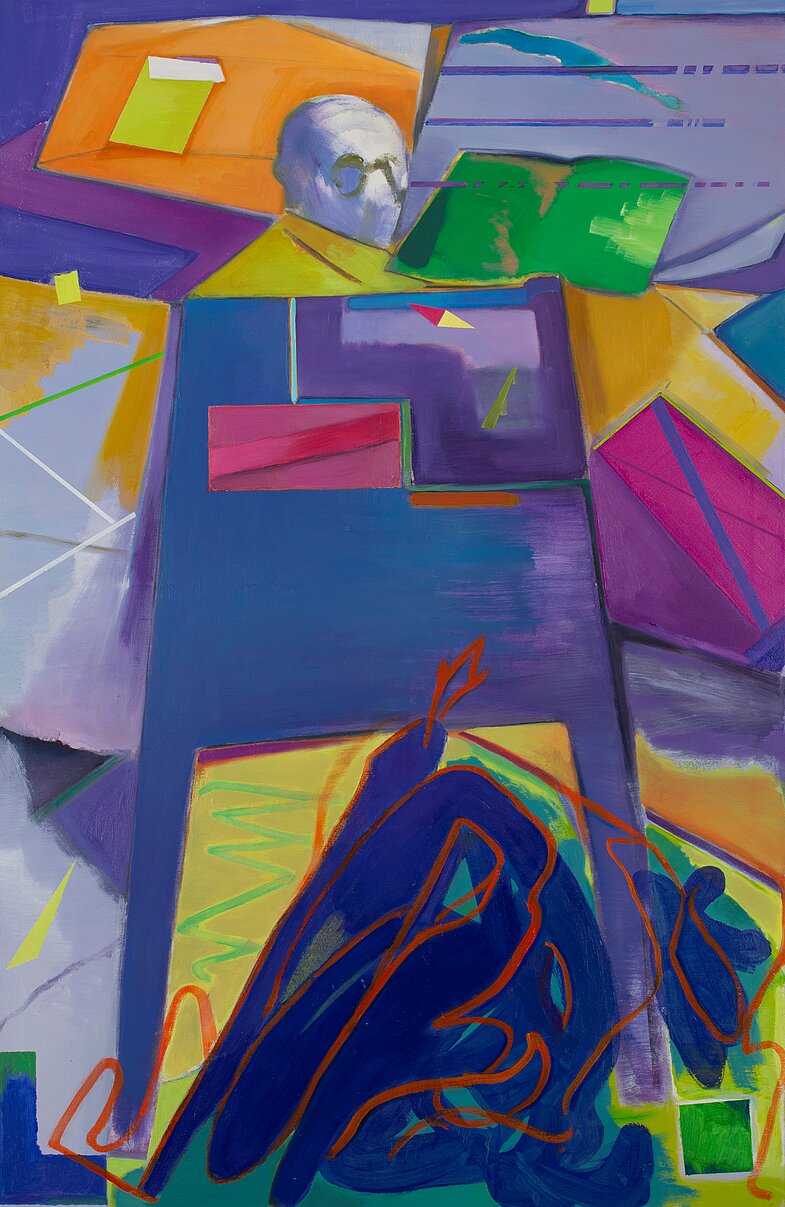
My work is about a kind of spatial construction that allows images or images of urban landscapes to coexist or couple in different media simultaneously. It is a way of reproducing something invisible through the method of models, when ordinary images lose their impact. Or the sense of the quasi-visible that I feel when I look at cities, grids, urban landscapes.
"In his artistic practice Shengjie Zong refers to Jean Baudrillard's philosophical theory of "Simulacra and Simulation". He deals with different levels of abstraction of symbols and questions about the reality we live in and how it comes about. For Shengjie Zong, the pictorial space represents the actual medium of his art. He sees his images as an extension of reality and uses them to question it." (Liam Floyd)